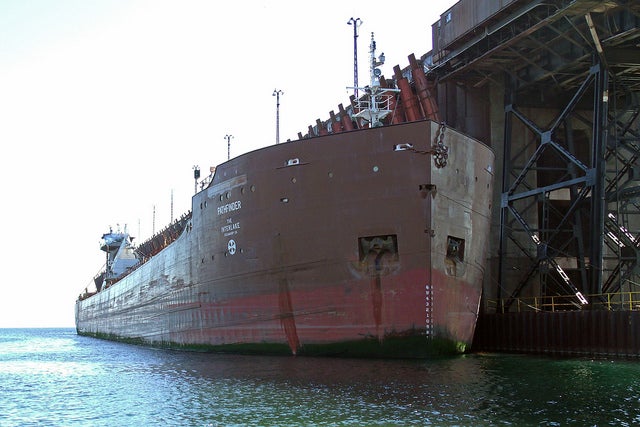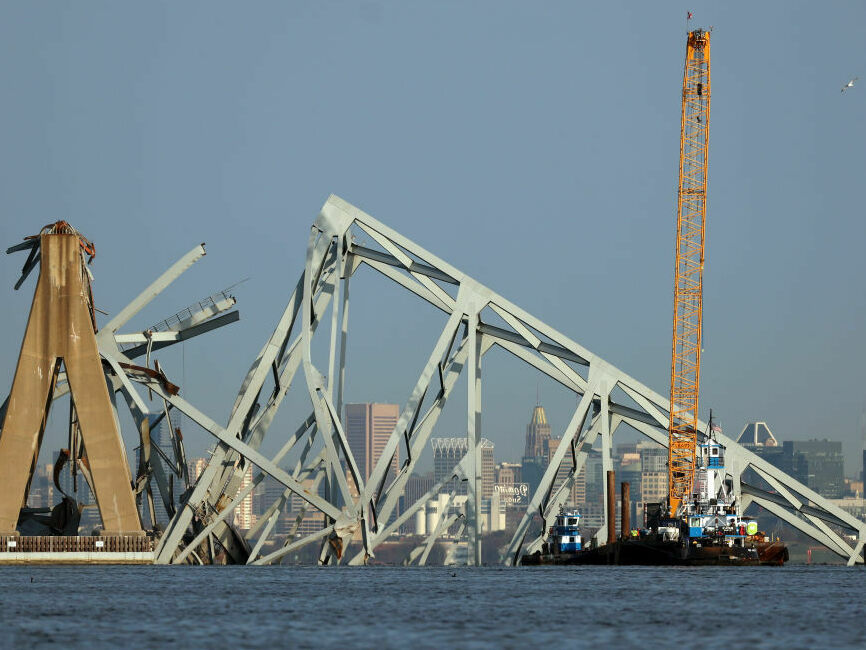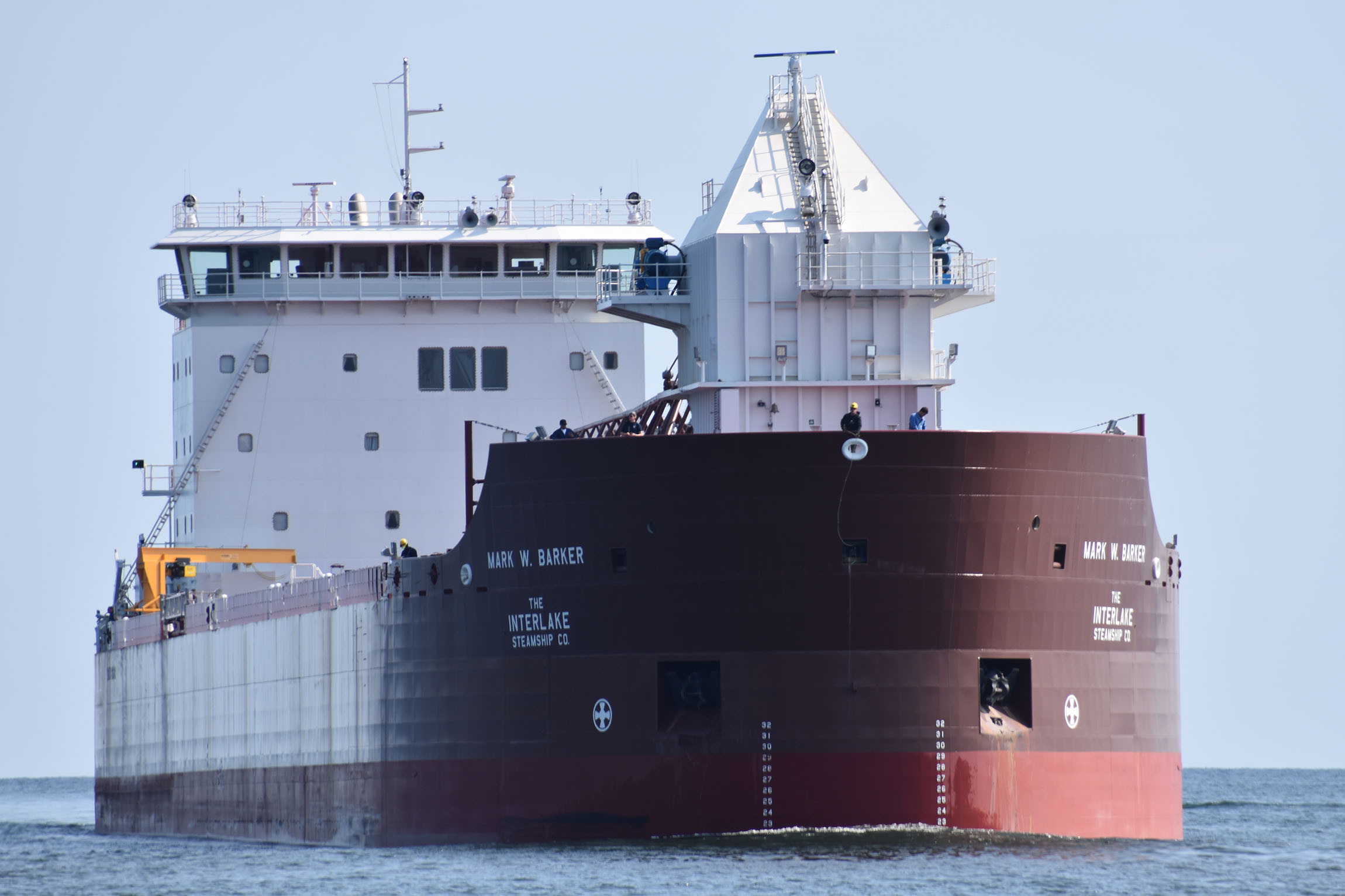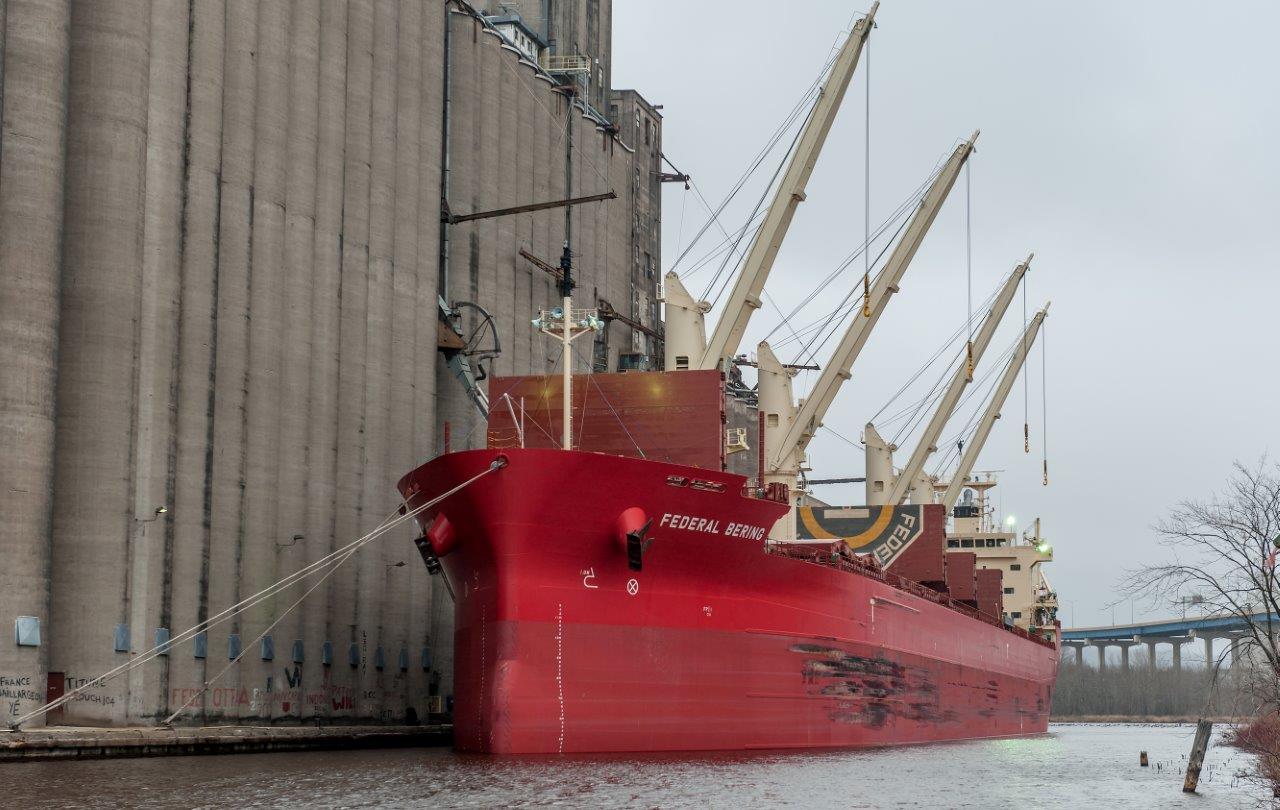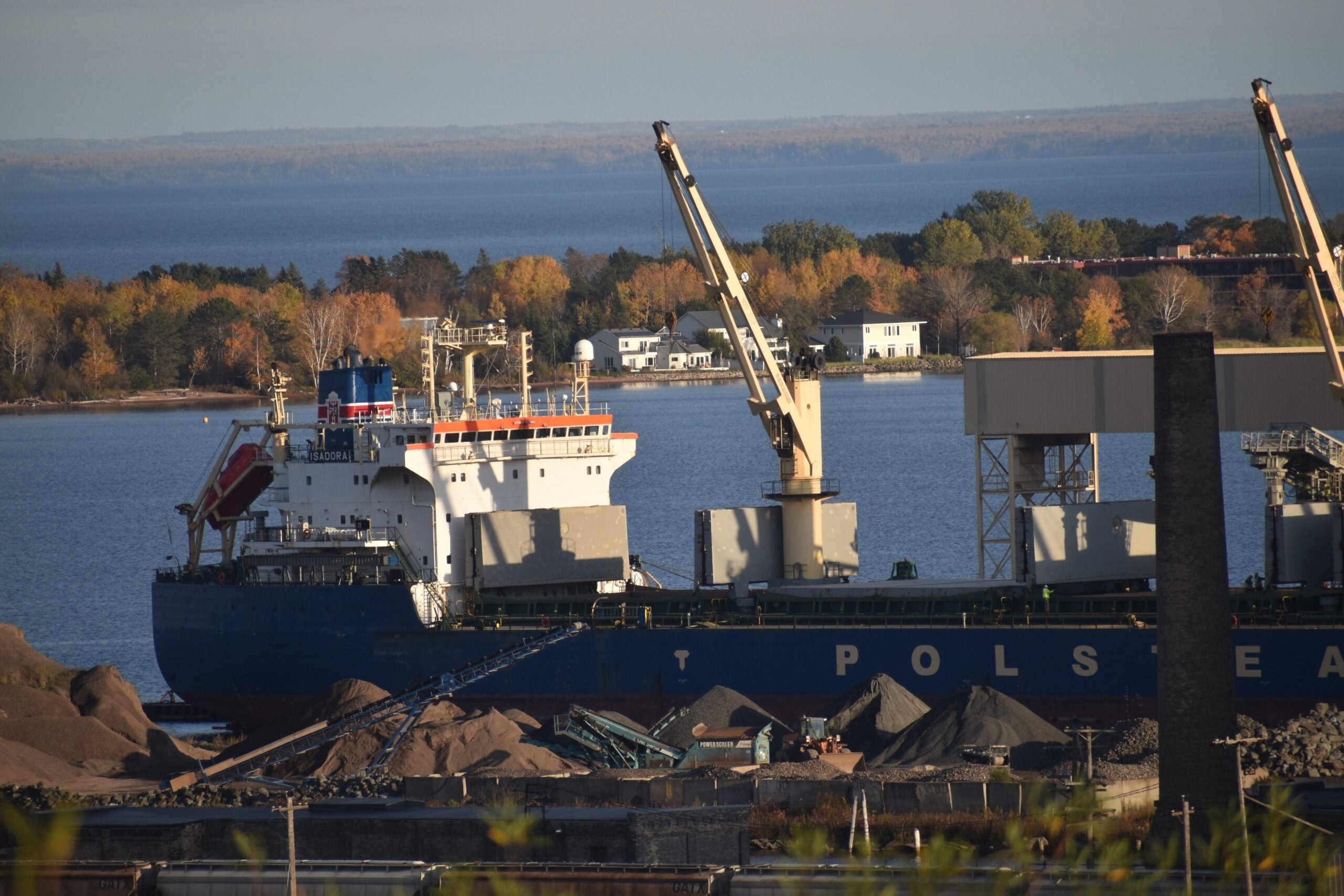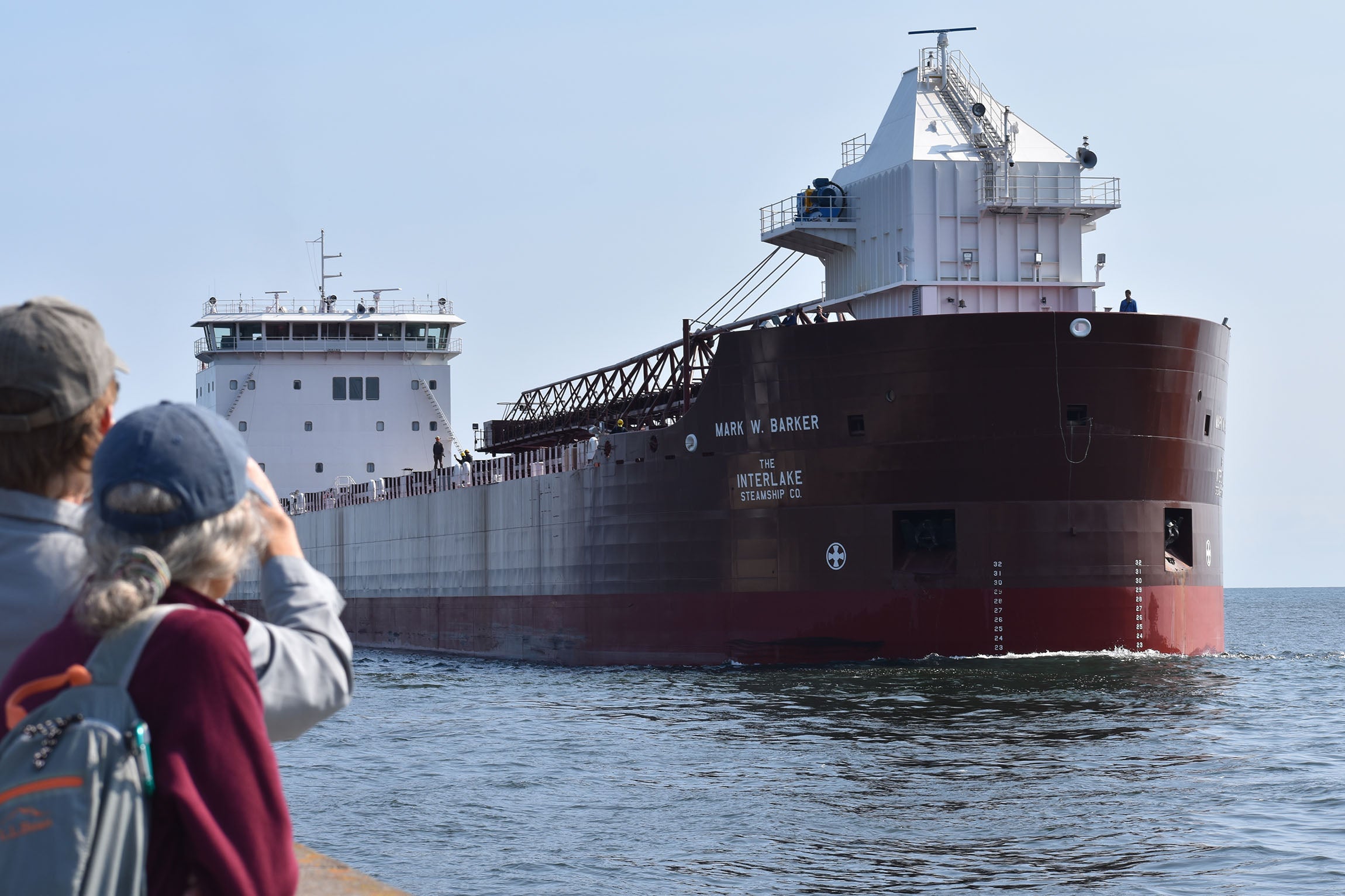After fighting the thickest and largest ice cover on the Great Lakes in decades and losing, shipping finally returned to normal last month.
The season was supposed to open March 25, but it took two more weeks before ships could even get going. Even then, they needed Coast Guard escorts to get through, especially on Lake Superior. Several ships were damaged and laid-up by the ice.
Guthrie-Hubner shipping agent Chuck Hilleran said it was tough any way you slice it.
Stay informed on the latest news
Sign up for WPR’s email newsletter.
“A lot of guys in retrospect and some of the shipping companies, they didn’t put anything out there until the middle of April or whatever … Some of them charged out onto the ice and it cost them,” he said.
Cargo numbers in the St. Lawrence Seaway from ocean-going ships are down 22 percent this year.
The biggest cargo, iron ore, is down 26 percent from a year ago on U.S.-flagged vessels. Lake Carriers Association Vice-President Glen Nekvasil said the Coast Guard escorts finally ended May 2.
“And as a result, we moved about 6.4 million tons of iron ore, which was basically a repeat of a year ago,” Nekvasil said. “But in a very, very real sense the ice still took a toll on us in May because three of the 1,000 footers had to go to the shipyard combined for a total of 65 days to repair damage that they suffered in the ice.”
Nekvasil said that cost 600,000 tons of iron ore that could have been delivered to steel mills in the lower Great Lakes. He said that will be tough to make up.
“Obviously having the higher water levels will help a bit but we are facing a real challenge. There’s no denying that,” he said.
Higher water levels in the Great Lakes this year means vessels can carry more cargo in their holds.
Wisconsin Public Radio, © Copyright 2024, Board of Regents of the University of Wisconsin System and Wisconsin Educational Communications Board.

